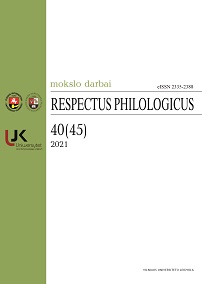Lietuvių ir baltarusių kalbų fonetikos sąveika Rodūnios apylinkėse
Interaction of Lithuanian and Belarusian Dialects in the Surroundings of Radun
Author(s): Nijolė TuomienėSubject(s): Phonetics / Phonology, Comparative Linguistics, Sociolinguistics, Eastern Slavic Languages, Baltic Languages
Published by: Vilniaus Universiteto Leidykla
Keywords: language contact; border region dialects; Southern Aukštaitian; Belarusian dialect; bilingualism; phonetic interference;
Summary/Abstract: The research focuses on the interaction of the Lithuanian and Belarusian languages in the surroundings of Radun (Belarus, Voranava district, Lith. Rodūnia). Employing the language change methodology, the paper presents a detailed analysis of the most prominent cases of phonetic interference of two – old and middle – generations of residents in both languages spoken by them. The data show that the oldest residents are expressing both languages using the Lithuanian articulatory base. Over time, the characteristic Lithuanian features begin to level: varies the pronunciation of a; in open endings, the long tense vowels i, ы are usually pronounced as é; unstressed vowels are reduced inconsistently, etc. As Lithuanian is for the middle-generation speakers, it already demonstrates essential changes, which occurred because they started expressing their Lithuanian using the Belarusian articulatory base. First of all, they usually lengthen stressed short vowels; they do no longer pronounce unstressed long vowels; they do not distinguish between acute – or circumflex-accented mixed i, u + R type diphthongs; they distinguish the diphthongs ái – aũ, ái – aĩ on the accentological rather than phonetic grounds; t̑, d̑ are often replaced by palatalized palate consonants k̂, ĝ.
Journal: Respectus Philologicus
- Issue Year: 2021
- Issue No: 40 (45)
- Page Range: 48-60
- Page Count: 13
- Language: Lithuanian

